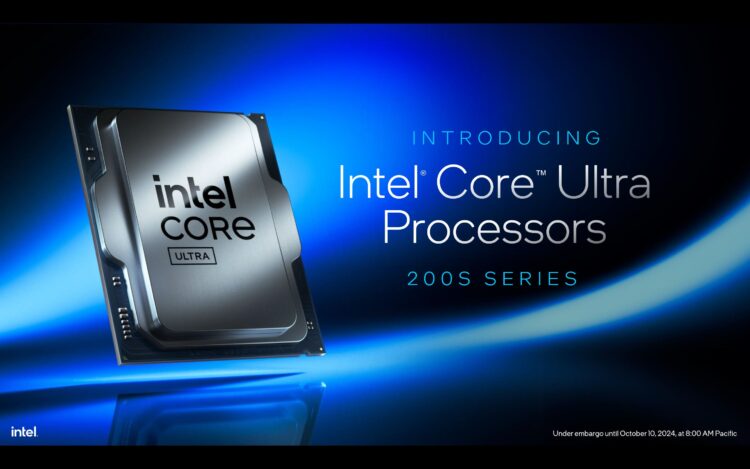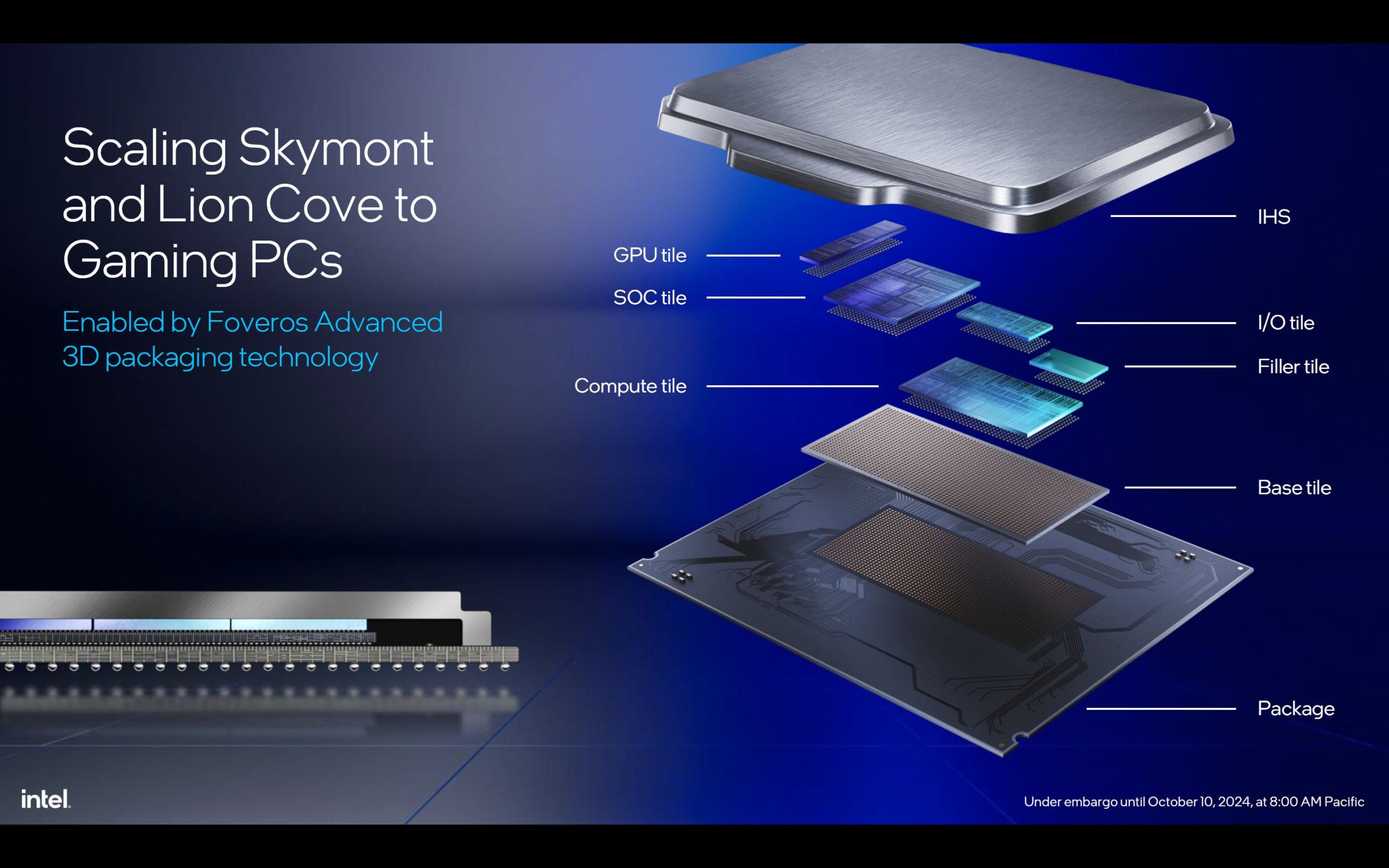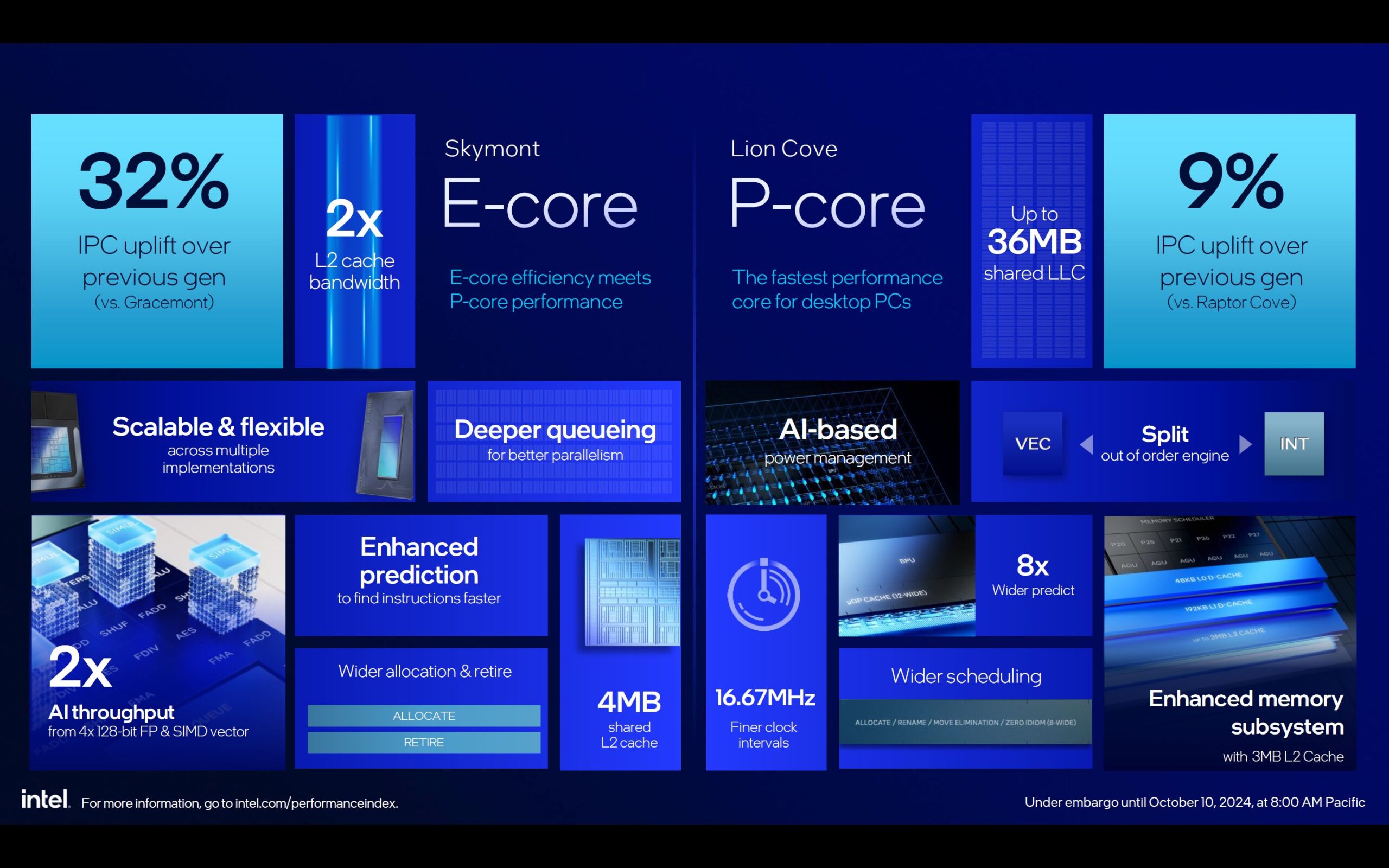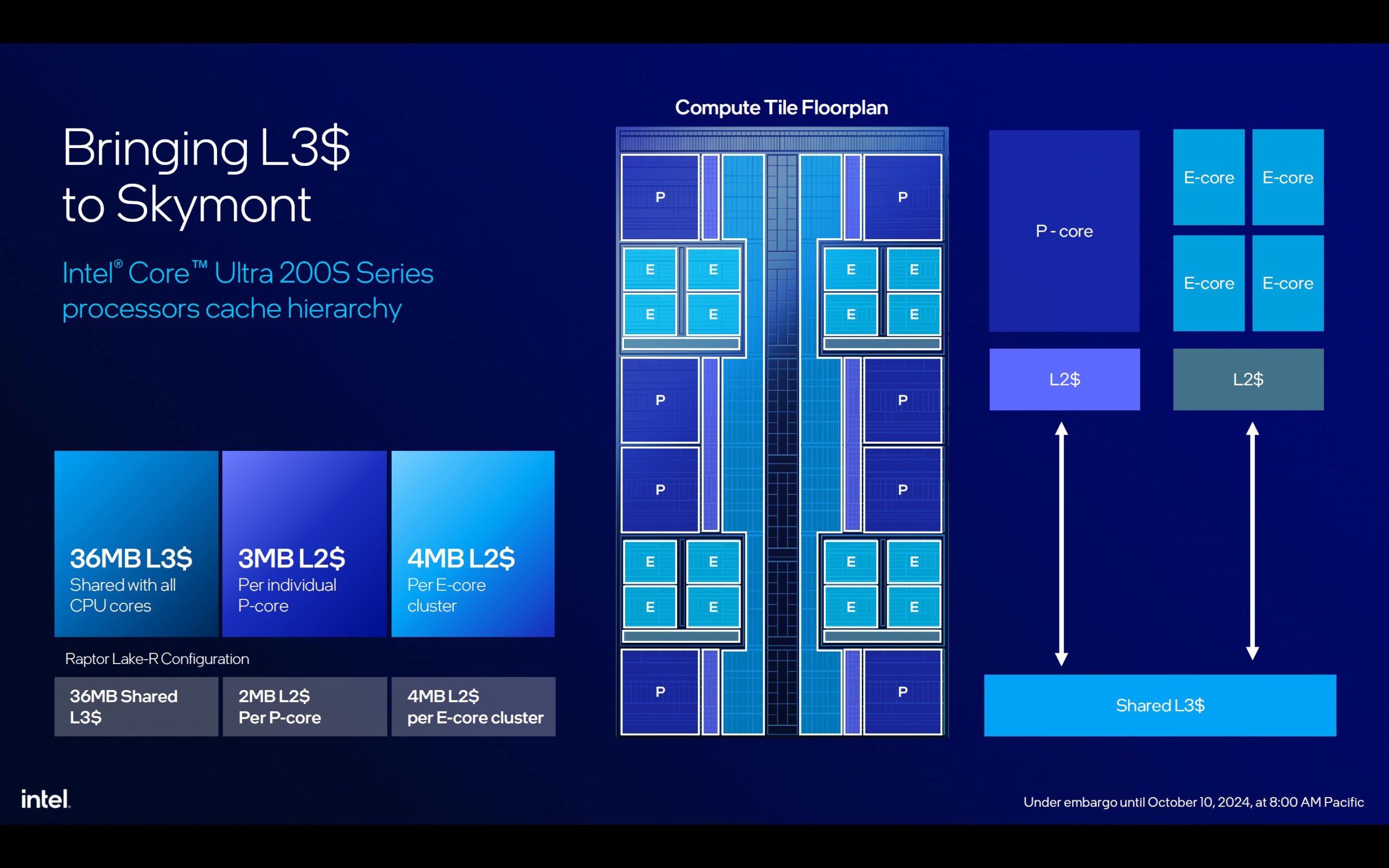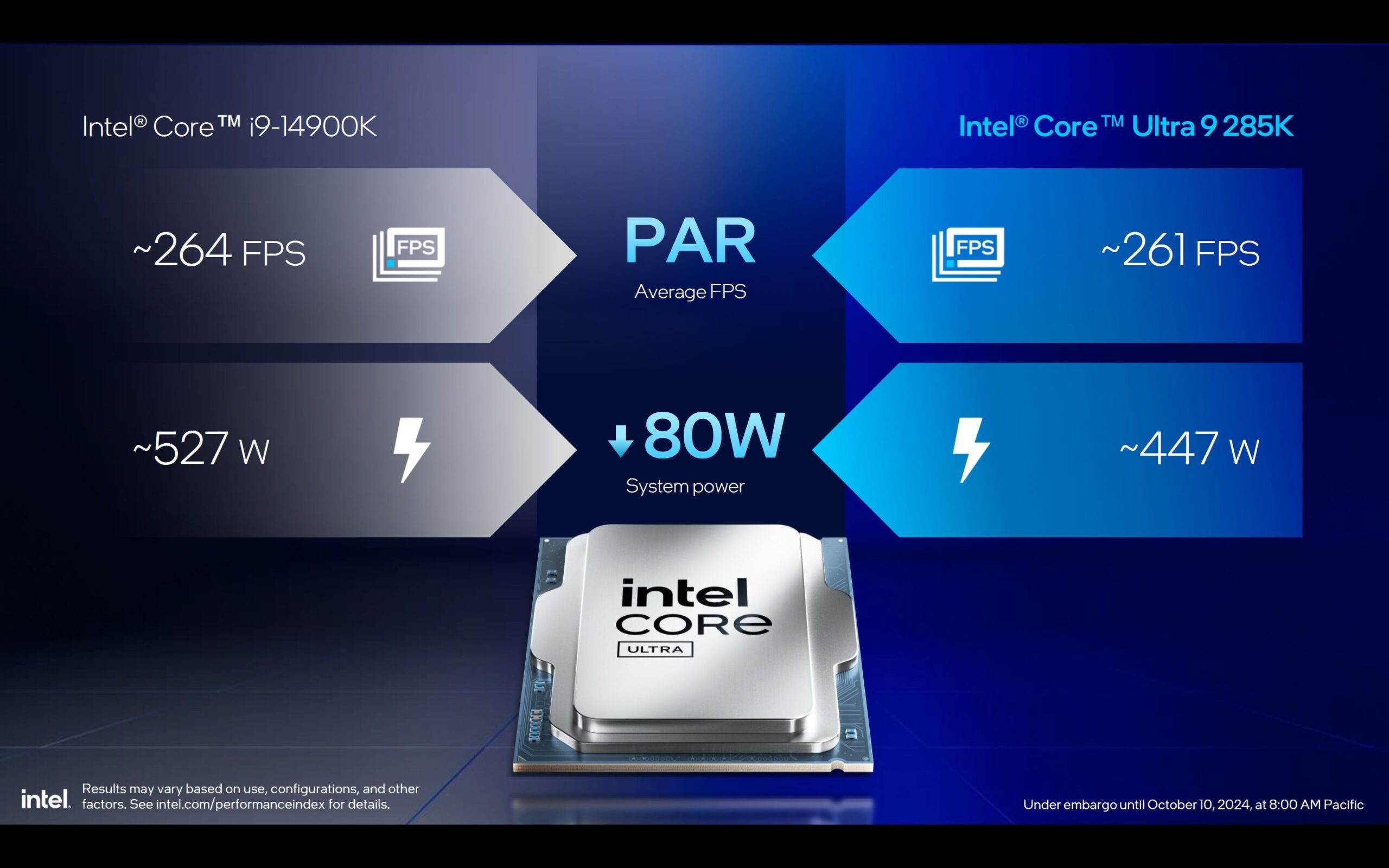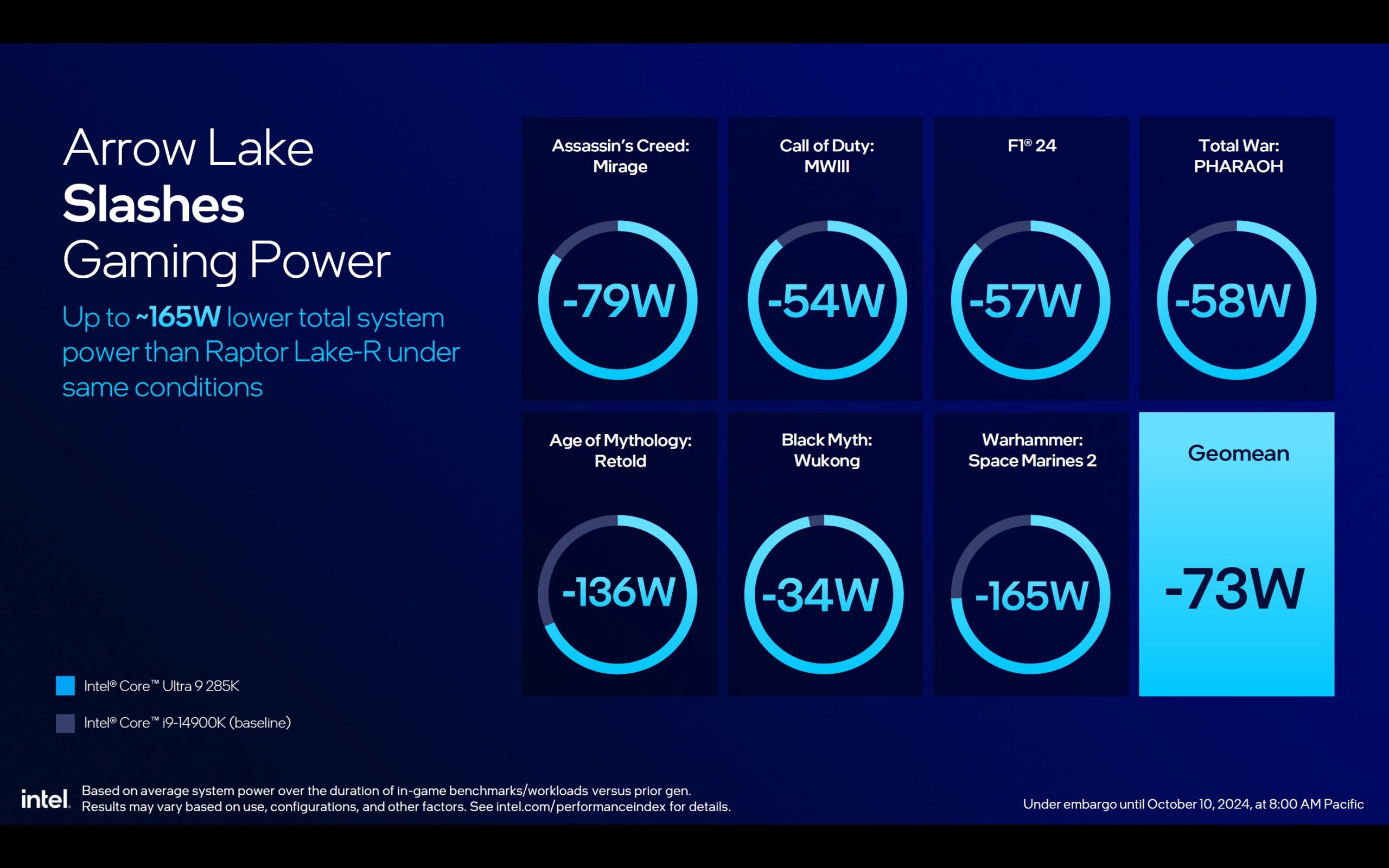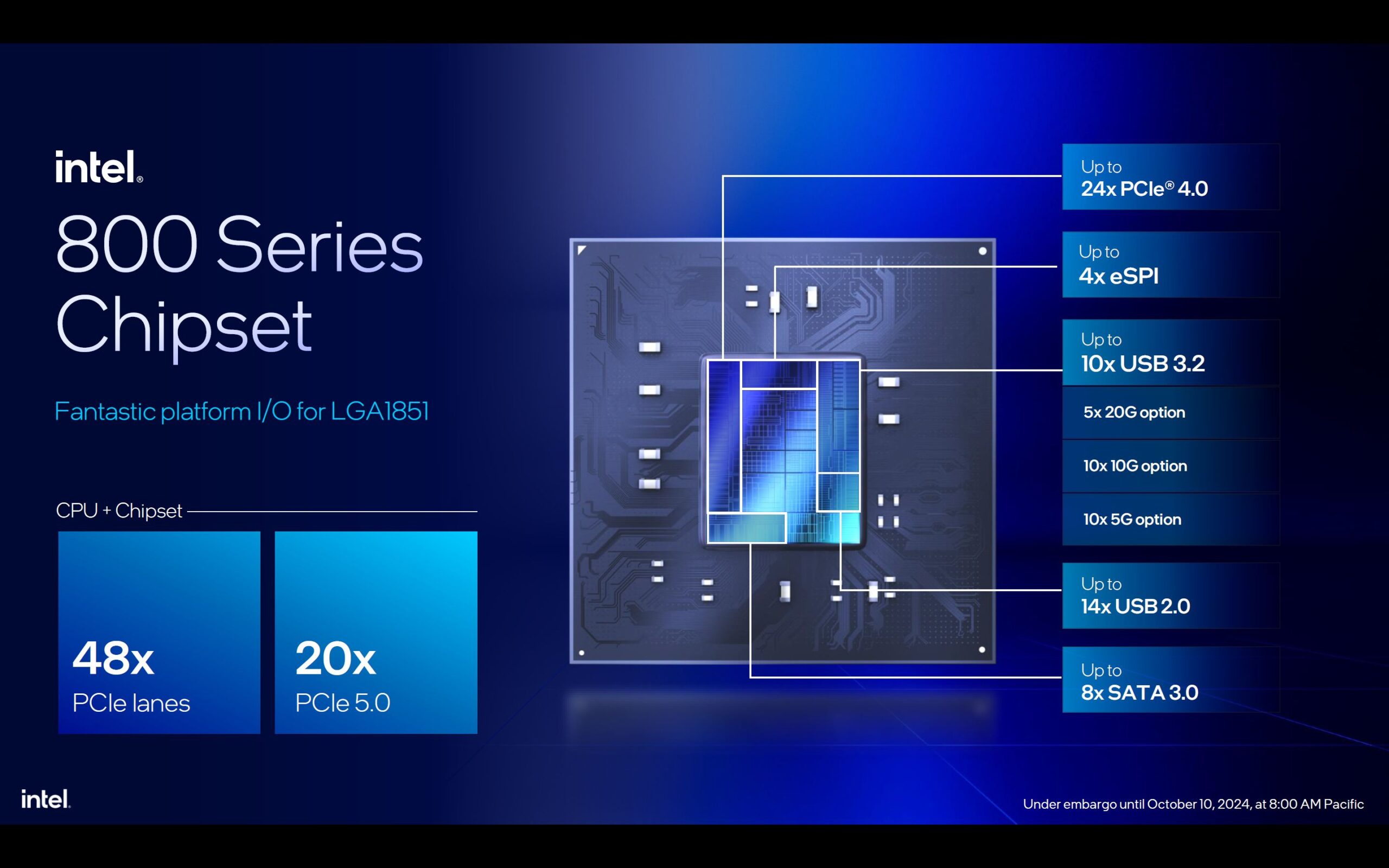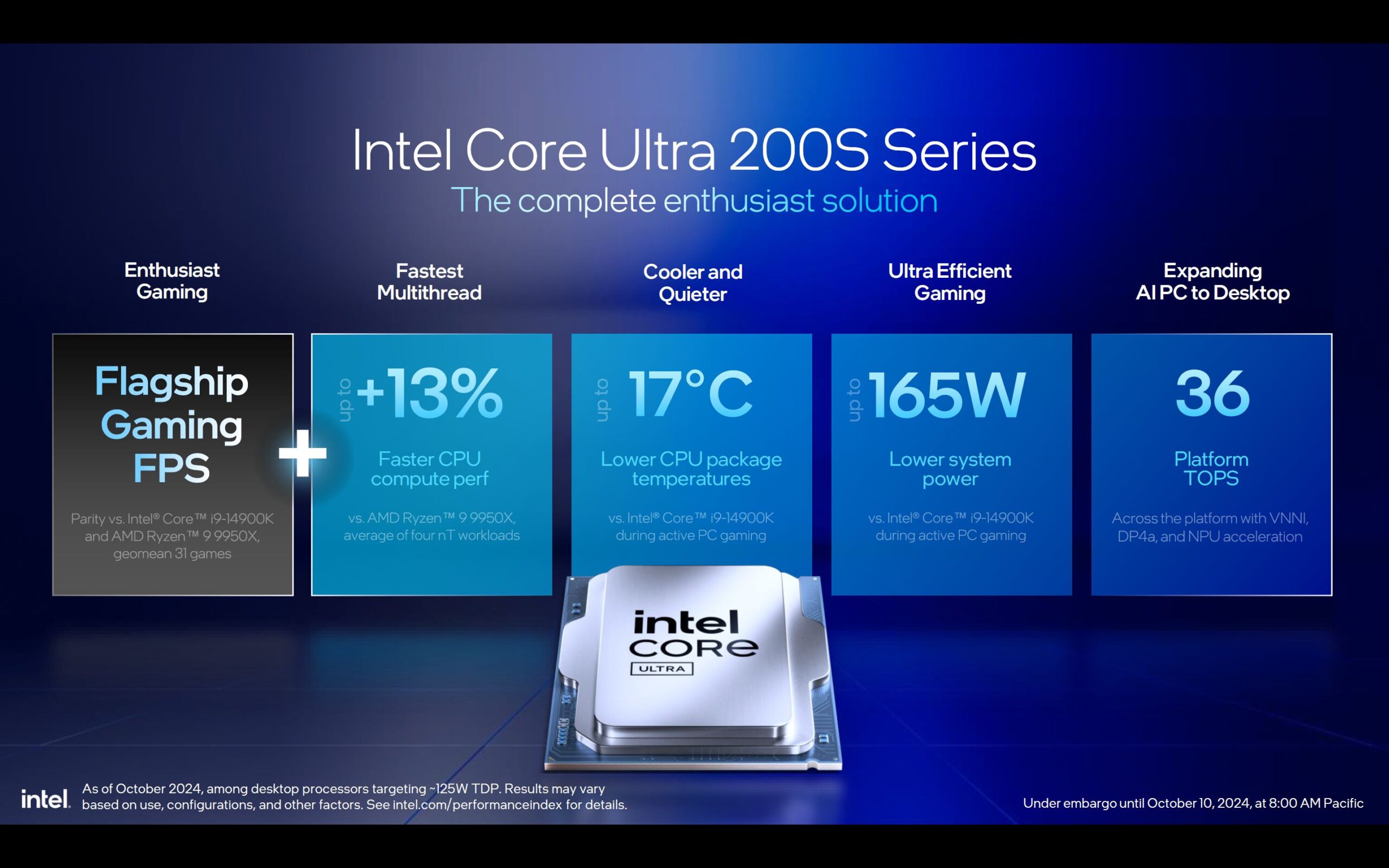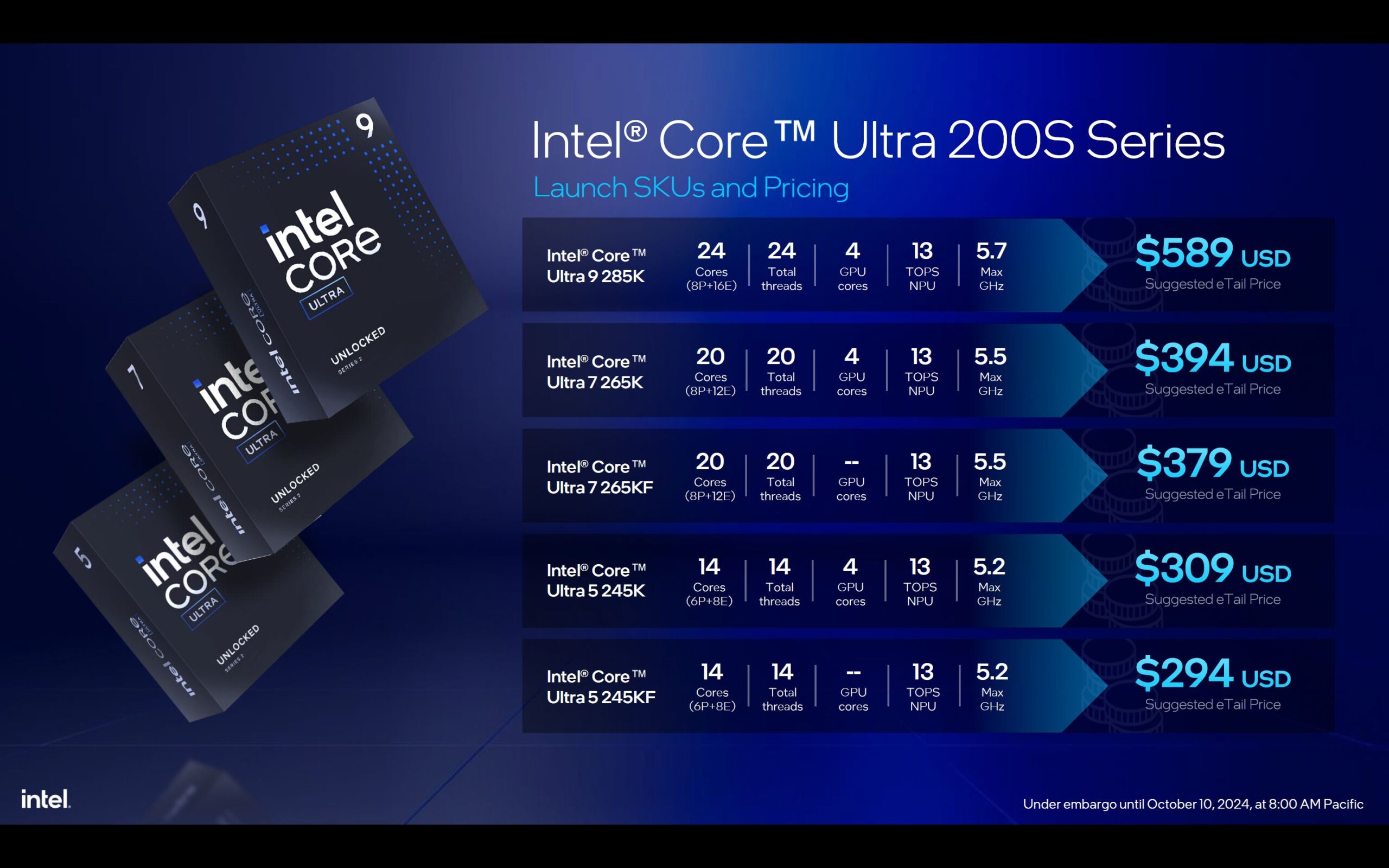Intel’s Arrow Lake Core Ultra 200S desktop CPU lineup is finally here, after what feels like an eternity. As the 15th generation of the lineup, the lineup is the direct successor or replacement, if you will, of the chipmaker’s 14th generation Raptor Lake-S Refresh , which was also the last generation to be built around its monolithic architecture.
For the uninitiated, Arrow Lake marks the first time Intel’s Foveros 3D packaging technology has been brought over to the desktop platform. First introduced with the launch of its Meteor Lake laptop CPUs, the packaging technology adopts a multi-tile design and has since been deployed with the current Lunar Lake architecture and, in this case, the desktop lineup.
Moving on, Arrow Lake at launch will have five SKUs available. These SKUs, in descending order, are:
- Core Ultra 9 285K
- Core Ultra 7 265K
- Core Ultra 7 265KF
- Core Ultra 5 245K
- Core Ultra 5 245KF
The total number of P-Cores, E-Cores, and threads are different too. Like Lunar Lake, Arrow Lake CPUs no longer have hyperthreading for the P-Cores, meaning that the total number of cores is the same number of threads that you’ll get. The main reason for the architectural shift is due to the improved power efficiency and consumption by these CPUs. more on that later.
To summarise this point, the lowest tier Core Ultra 5 245K ships out with a total of 14-cores and 14-threads, while the top-tier Core Ultra 9 ships out with 24-cores and 24-threads.
Like its Lunar Lake laptop counterpart, the new Raptor Lake CPUs – the “K” models, at least – come with integrated graphics based from Xe2 cores. Four units, to be specific In terms of boost clocks, the the Core Ultra 5 245K and KF are able to achieve maximum 5.2GHz out of the box, while the Core Ultra 9 285K is able to hit 5.7Ghz on a single-core.
The one other major addition to Raptor Lake is, of course, an NPU, making this the first desktop CPU series to ship out with it. Mind you, it’s the same NPU across the board; it’s a modified and improved version of the original NPU used in Meteor Lake and has a peak performance of 13 TOPS.
One point that Intel wanted consumers to understand is that the performance of its Core Ultra 200S series is more or less on par with its 14th generation desktop CPUs, just with better thermal efficiency and power consumption. Case in point, the Core Ultra 9 285K yields the same number of frames as the Core i9-14900K, all while consuming 80W less.
For that matter, Intel also claims that its new CPU series runs cooler too. Up to 15°C cooler than their 14th generation Raptor Lake-S Refresh counterparts, to be precise.
Of course, a new CPU architecture means a new chipset. In this case, the new CPUs are based on a new LGA1815 configuration, which is bigger than the last generation LGA1700. In addition, it also gets a new 800 Series chipset, which also unfortunately means that if you want to own a processor from this generation, you’re going to need to change out the motherboard.
To provide broad strokes with what the new chipset provides, you’re looking at up to 48X PCIe lanes, 20 of which are PCIe 5.0 lanes; put to 4x eSPI; up to 10 USB3.2; 14x USB2.0; and up to 8x SATA 3.0. And yes, the system supports Thunderbolt 4, as well as Wi-Fi 7 and up to Bluetooth 5.4. Oh, and up to 192GB DDR5 RAM too.
Preorders and sales for the Intel Arrow Lake Core Ultra 200S series processors begin on 24 October. Pricing starts at US$294 (~RM1,259) with the Core Ultra 5 245KF and tops out at US$589 (~RM2,522) for the Core Ultra 9 285K.

